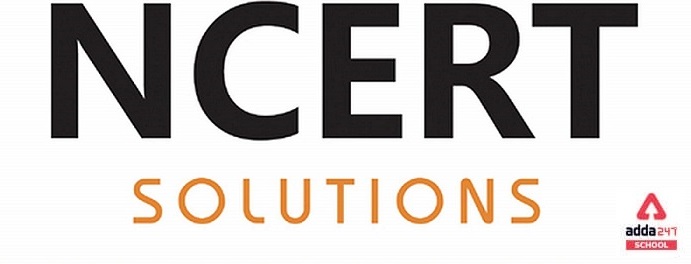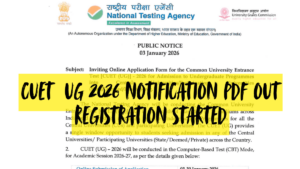NCERT Solutions for Class 11 Biology Chapter 20 in English
Class 11 Biology NCERT Solutions: Adda 247 provides NCERT Solutions for Class 11 Biology Chapter 20 which is for the students who want to go ahead in life and achieve great marks in their examinations. The NCERT Solutions for class 11 are provided by the teachers who are experts of their subjects. The solutions are set according to the rules formulated by the NCERT class 11 biology and in the language that can be understood by every student. By these reading the solutions students can build up a strong base easily. The NCERT class 11 Biology solutions covers the chapters 1 to 22 with the important questions and the answers in a detailed way.
Examinations can be threatening for some people, a proper learning of the concepts is the key to crack the examination. Students rely on the solutions of the NCERT provided by Adda 247. The solutions are formulated by the experts of the subjects who have tremendous knowledge in their subjects.
These NCERT Solutions of class 11 help the students to get familiarized with the textbooks. The students can access the solutions anywhere while browsing the web easily. The solutions are very precise and accurate.
NCERT Solutions for Class 11 Biology Chapter 20 – Locomotion and Movement
The chapter provides information about Locomotion and Movement. Movement is defined as any change in the position, exhibited either by the whole organism or any part of it. It is one of the important parts of the organism. The movement of living things are autonomic while the movement of non-living things is induced. Both animals and plants exhibit a lot of movements. Movement of animals can be muscular or non-muscular. Plants show often cellular or organ movement. The study of movement is called kinesiology.
[sso_enhancement_lead_form_manual title=”Download Full PDF of Class 11 Biology Chapter 20 ” button =”Download Now” pdf =”/jobs/wp-content/uploads/2021/06/26184333/English-chapter-20.pdf”]
Features of the NCERT Solutions for Class 11 Biology Chapter 20 – Locomotion and Movement
NCERT Solutions of class 11 have been answered based on the important information on the question.
- The columns are used wherever necessary.
- Solutions are solved point wise and accurately answered point to point.
Important Question for Locomotion and movement
Question 2. Define sliding filament theory of muscle contraction.
Answer:
- The sliding filament theory was mainly proposed to explain the process of muscle contraction. This theory proposes that during muscle contraction the thin filaments slide over the thick filaments leading to shortening of the myofibrils.
- Each muscle fibre possesses alternate light and dark bands, which contains a specialised contractile protein known as actin and myosin respectively.
- Actin refers to a thin contractile protein present in the light band and is known as the I-band, on the other hand, myosin is a thick contractile protein present in the dark band and is known as the A-band.
- An elastic fibre called z line bisects each I-band. to this z line, the thin filament is firmly anchored. The central part of the thick filament that is not overlapped by the thin filament is known as the H-zone.
- During muscle contraction, the myosin heads or cross bridges come in close contact with the thin filaments causing the thin filaments to be pulled towards the middle of the sarcomere. The Z line attached to the actin filaments is also pulled leading to the shortening of the sarcomere. Hence, the length of the band remains constant as its original length and the I-band shortens and the H-zone disappears.
Question 3. Describe the important steps in muscle contraction.
Answer: Muscle contraction is initiated by a signal sent by the central nervous system (CNS) via a motor neuron. A motor neuron along with the muscle fibres connected to it constitute a motor unit. The junction between a motor neuron and the sarcolemma of the muscle fibre is called the neuromuscular junction or motor-end plate. A neural signal reaching this junction releases a neurotransmitter (Acetyl choline) which generates an action potential in the sarcolemma. This spreads through the muscle fibre and causes the release of calcium ions into the sarcoplasm. Increase in Ca++ level leads to the binding of calcium with a subunit of troponin on actin filaments and thereby remove the masking of active sites for myosin.
Utilising the energy from ATP hydrolysis, the myosin head now binds to the exposed active sites on actin to form a cross bridge. This pulls the attached actin filaments towards the centre of ‘A’ band. The ‘Z’ line attached to these actin are also pulled inwards thereby causing a shortening of the sarcomere, i.e., contraction.
The process continues till the Ca++ ions are pumped back to the sarcoplasmic cisternae resulting in the masking of actin filaments. This causes the return of ‘Z’ lines back to their original position, i.e., relaxation.
Question 4. Write true or false. If false change the statement so that it is true.
(a) Actin is present in thin filament
(b) H-zone of striated muscle fibre represents both thick and thin filaments.
(c) Human skeleton has 206 bones.
(d) There are 11 pairs of ribs in man.
(e) Sternum is present on the ventral side of the body.
Answer:
(a) Muscle fibers are composed of myofibrils.The filaments of myofibrils consist of two types, thick and thin. The thick filaments are made of the potein myosin. The thin filaments are made of the protein actin.
So, the statement is true.
(b) The region of a striated muscle fibre that contains only thick (myosin) filaments is the H zone. It appears as a lighter band in the middle of the dark A band at the centre of a sarcomere.
So, the statement is false. H-zone of striated muscle fibre represents thick filament.
(c) The human skeleton is the internal framework of the body. It is composed of around 270 bones at birth which decreases to around 206 bones by adulthood after some bones get fused together.
So, the statement is true.
(d) Ribs are the long curved bones which form the rib cage. They protect the lungs, heart, and other internal organs of the thorax. There are 24 ribs in the human body, divided into two sets of 12 curved, flat bones.
So, the statement is false. There are 12 pairs of ribs in man.
(e) The sternum or breastbone is a long flat bone shaped located in the center of the chest. It lies at the anterior (ventral) middle part of the chest.
So, the statement is true.
Question 5. Write the difference between:
(a) Actin and Myosin
(b) Red and White muscles
(c) Pectoral and Pelvic girdle
Answer:
(a) Actin and Myosin
| Actin | Myosin |
| Actin is a thin contractile protein.
|
Myosin is a thick contractile protein.
|
| It is present in light bands and is called an isotropic band.
|
It is present in dark bands and is called an anisotropic band.
|
(b) Red and white muscles
| Red muscle fibres | White muscle fibres |
| Red muscle fibres are thin and smaller in size. | White muscle fibres are thick and larger in size. |
| They are red in colour as they contain large amounts of myoglobin. | They are white in colour as they contain small amounts of myoglobin |
| They contain numerous mitochondria. | They contain less number of mitochondria. |
| They carry out slow and sustained contractions for a long period. | They carry out fast work for short duration. |
| They provide energy by aerobic respiration. | They provide energy by anaerobic respiration. |
(c) Pectoral and pelvic girdle
| Pectoral girdle | Pelvic girdle |
| It is a skeletal support from where the forelimbs of vertebrates are attached. | It is a skeletal support form where the hind limbs of vertebrates are attached. |
| It is composed of two Bones namely, clavicle or collar bones and scapula or shoulder bone. | It is composed of three bones, upper ileum, inner pubic, and ischium. |
Question 6. Match Column I with Column II:
| Column I | Column II |
| (a) Smooth muscle | (i) Myoglobin |
| (b) Tropomyosin | (ii) Thin filament |
| (c) Red muscle | (iii) Sutures |
| (d) Skull | (iv) Involuntary |
Answer:
| Column I | Column II |
| (a) Smooth muscle | (iv) Involuntary |
| (b) Tropomyosin | (ii) Thin filament |
| (c) Red muscle | (i) Myoglobin |
| (d) Skull | (iii) Sutures |
Question 7. What are the different types of movements exhibited by the cells of human body?
Answer: Cells of the human body exhibit three main types of movements-amoeboid, ciliary and muscular.
- Amoeboid Movement: Some specialised cells in our body like macrophages and leucocytes in blood exhibit amoeboid movement. It is effected by pseudopodia formed by the streaming of protoplasm (as in Amoeba). Cytoskeletal elements like microfilaments are also involved in amoeboid movement.
- Ciliary Movement: Ciliary movement occurs in most of our internal tubular organs which are lined by ciliated epithelium. The coordinated movements of cilia in the trachea help us in removing dust particles and some of the foreign substances inhaled along with the atmospheric air. Passage of ova through the female reproductive tract is also facilitated by the ciliary movement.
- Muscular Movement : Movement of our limbs, jaws, tongue, etc., require muscular movement. Locomotion requires a perfect coordinated, activity of muscular, skeletal and neural systems.
Question 8. How do you distinguish between a skeletal muscle and a cardiac muscle?
Answer: The differences between skeletal muscles and cardiac muscles are as follows:
| Skeletal muscle | Cardiac muscle |
| The function of skeletal muscles is voluntary. | Cardiac muscles function involuntarily. |
| The cells of these muscles are unbranched | The cells of these muscles are branched |
| Intercalated discs between the cells are absent | Intercalated discs between the cells are present |
| These consists of alternate light and dark bands | These possess bands that are fainted |
| These are voluntary in nature | These are involuntary in nature |
| They help in locomotory actions and body posture | Cardiac muscles help in movements of the heart |
Question 9. Name the type of joint between the following:-
(a) atlas/axis
(b) carpal/metacarpal of thumb
(c) Between phalanges
(d) femur/acetabulum
(e) Between cranial bones
(f) Between pubic bones in the pelvic girdle
Answer:
(a) Pivot joint
(b) Saddle joint
(c) Gliding joint
(d) Ball and socket joint
(e) Fibrous joint
(f) Cartilagenous pint
Question 10. Fill in the blank spaces:
(a) All mammals (except a few) have __________ cervical vertebra.
(b) The number of phalanges in each limb of human is __________
(c) Thin filament of myofibril contains 2 ‘F’ actin and two other proteins namely____ and _____.
(d) In a muscle fibre Ca++ is stored in __________
(e) __________ and __________ pairs of ribs are called floating ribs.
(f) The human cranium is made of __________ bones
Answer:
(a) All mammals (except a few) have seven cervical vertebra.
(b) The number of phalanges in each limb of human is 14.
(c) Thin filament of myofibril contains 2 ‘F’ actins and two other proteins namely troponin and tropomyosin.
(d) In a muscle fibre Ca++ is stored in sarcoplasmic reticulum.
(e) 11th and 12th pairs of ribs are called floating ribs.
(f) The human cranium is made of eight bones.
Frequently Asked Questions on NCERT Solutions for Class 11 Biology Chapter 20
What are the advantages of referring NCERT Solutions for class 11 Biology chapter 20?
Students referring the NCERT Solutions of class 11 by Adda 247 find the solutions helpful during the exams. The solutions are prepared by the experts in an interactive manner keeping in mind the students. The students’ perspective is kept in mind while preparing the solutions. It helps in completing the syllabus on time and also provides notes for the revision prior to the exam.
What are the advantages of referring NCERT in competitive exams like JEE and AIPMT?
Most of the competitive exams like NEET, JEE etc. follow the basic NCERT books for designing their question papers. NCERT serves as the base for every book prepared for NEET and JEE. The competitive exams are based on the CBSE syllabus applied in XI and XII classes and NCERT books strictly follow CBSE syllabus. In addition to this, NCERT books play an important role in clearing out the theoretical concepts. Every topic given in NCERT books is explained in such a way to help students make their basics and fundamentals strong and clear.
How to read NCERT books more efficiently?
Given below are the important points which must be followed while reading the NCERT books in an efficient manner:
Go through each topic thoroughly by understanding the meaning and significance of each line mentioned in that particular topic.
Ask your teacher if any doubts.
Note down the important topics to revise at the time of examination.
Solve all the exercise questions given at the end of each chapter. These questions are important for understanding the concepts in a better way.
Is it mandatory to solve all the NCERT questions mentioned at the end of each chapter?
The questions and answers mentioned in NCERT textbooks at the end of each chapter are quite important not only for examination but also for understanding the concepts in a better way. These questions aim to test the students’ understanding and learning over the topics that they have learned in the chapter.
Solving the NCERT exercise problems will help to
- clear all the concepts and formulae you learned in a chapter
- get comfortable with different types of questions that might be asked in exams
- get enough practice which is key to succeed in Mathematics exam
- improve your accuracy and speed
What are the important concepts covered in the Chapter 20 of NCERT Solutions for Class 11 Biology?
The concepts involved in the chapter 9 of NCERT Solutions are –
20.1 – Types of Movement
20.2 – Muscle
20.3 – Skeletal System
20.4 – Joints
20.5 – Disorders of Muscular and Skeletal System
These concepts are created by the faculty at Adda 247. The solutions are available at Adda 247 in the PDF format which can be downloaded by the students.









 NEET UG 2026 Registration: NTA releases ...
NEET UG 2026 Registration: NTA releases ...
 CUET UG 2026 Online Registration Started...
CUET UG 2026 Online Registration Started...
 CUET 2026 Free Batches Launched by CUET ...
CUET 2026 Free Batches Launched by CUET ...














